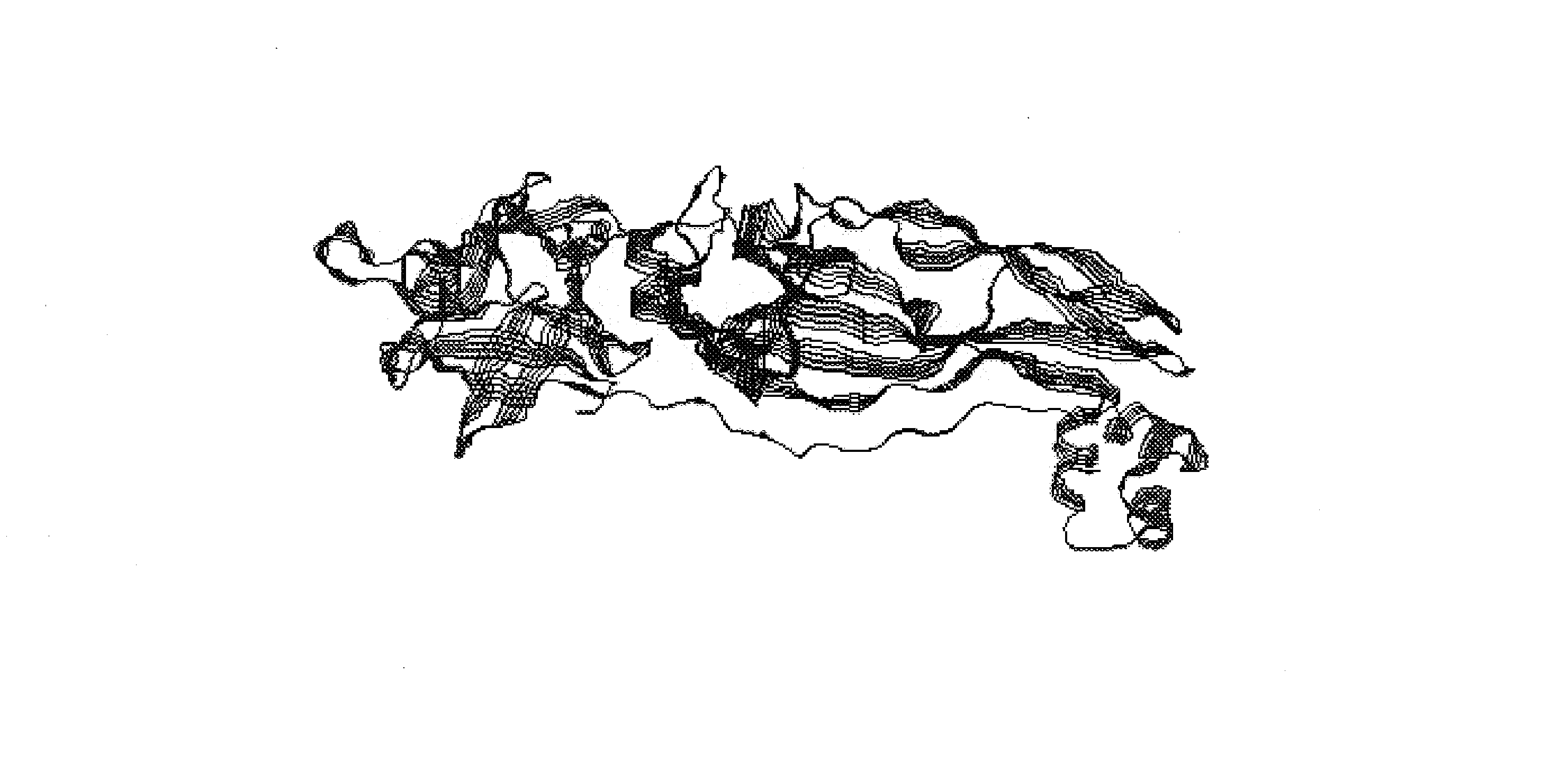Modified chimeric Cry35 proteins
a technology of cry35 protein and chimeric cry35, which is applied in the field of modified chimeric cry35 proteins, can solve the problems of difficult process to obtain sufficient purified crystals of b.t. insect toxins, damage to crops, and difficulty in obtaining sufficient purified crystals of adequate quality
- Summary
- Abstract
- Description
- Claims
- Application Information
AI Technical Summary
Problems solved by technology
Method used
Image
Examples
example 1
Modified Cry35 Proteins Having Increased Stability in Plants and Increased Activity in Insects; Introduction of Insect-Preferred, Plant-Disfavored Cleavage Site and Residue Substitutions in Domain 3
[0072]Some preferred embodiments of the subject invention include Cry35-M proteins having modifications that confer greater stability to the proteins in plants, as compared to wild-type Cry35 proteins and, preferably, that also facilitate better processing of the proteins in insects after the insects ingest the proteins. There are plant (protease) processing sites near the C-terminus of Cry35. Modifications can be made here that hinder processing in plants while facilitating processing in insects such as corn rootworms. WO 03 / 018810 (by Syngenta) discusses some possibilities for adding wCRW cathepsin G favored sites (AAPF, AAPM, AVPF, PFLF) to B.t. Cry3A proteins. Similar insect-preferred / plant-disfavored protease cleavage sites, and other insect-preferred / plant-disfavored protease cleava...
example 2
Construction of Chimeric Cry35-M Proteins and Chimeric Proteins Comprising Cry35 and Cry35-M Domains
[0077]According to the subject invention, Domains 1, 2, and / or 3 can be swapped between Cry35 homologoues. That is, for example, some embodiments of the subject invention include chimeric Cry35-M proteins comprising a Domain 1 from one Cry35 homologue and a heterologous domain from another Cry35 homologue. Also, some embodiments of the subject invention include chimeric Cry35-M proteins comprising a Domain 3 from one Cry35 homologue and a heterologous domain from another Cry35 homologue.
[0078]More specifically, Domain 1 exchanges (preferably of residues ˜1-143, but could be as far as ˜152) can be made between homologues, according to the subject invention. In addition, domain exchanges of residues ˜348 through the C-terminus can be made between homologues, according to the subject invention.
[0079]Chimerics exchanging segments from the R222-H224 loop through the P302-S306 loop can also...
example 3
Preferred Site-Specific Modifications (Residue Substitutions) Based on Sequence Diversity in Homologous Protein Toxins Together with Analysis of Crystallographic Data and Similarities to Evolutionarily Related Proteins
[0086]According to the subject invention, certain residues, areas, and / or segments of wild-type Cry35 proteins are preferred for site-specific changes.
[0087]One approach for such changes is to direct modifications to surface residues that are not in conserved areas. Cry35-M proteins resulting from such modifications maintain the structural integrity of the wild-type protein from which they are derived, but the Cry35-M proteins can be constructed to have improved properties (as compared to a wild-type). Thus, while avoiding the conserved areas, residues for substitution (to modify action and other properties) should be residues that are near concentrations of conserved residues. This is illustrated more concretely with reference to Appendix 1. These residues are identif...
PUM
 Login to View More
Login to View More Abstract
Description
Claims
Application Information
 Login to View More
Login to View More - R&D
- Intellectual Property
- Life Sciences
- Materials
- Tech Scout
- Unparalleled Data Quality
- Higher Quality Content
- 60% Fewer Hallucinations
Browse by: Latest US Patents, China's latest patents, Technical Efficacy Thesaurus, Application Domain, Technology Topic, Popular Technical Reports.
© 2025 PatSnap. All rights reserved.Legal|Privacy policy|Modern Slavery Act Transparency Statement|Sitemap|About US| Contact US: help@patsnap.com


